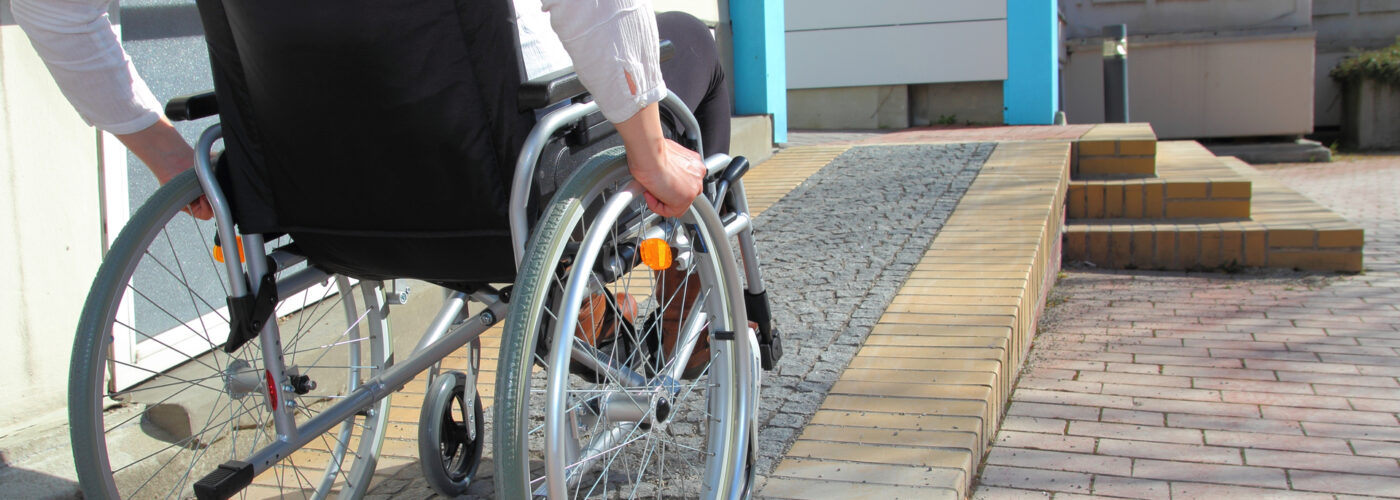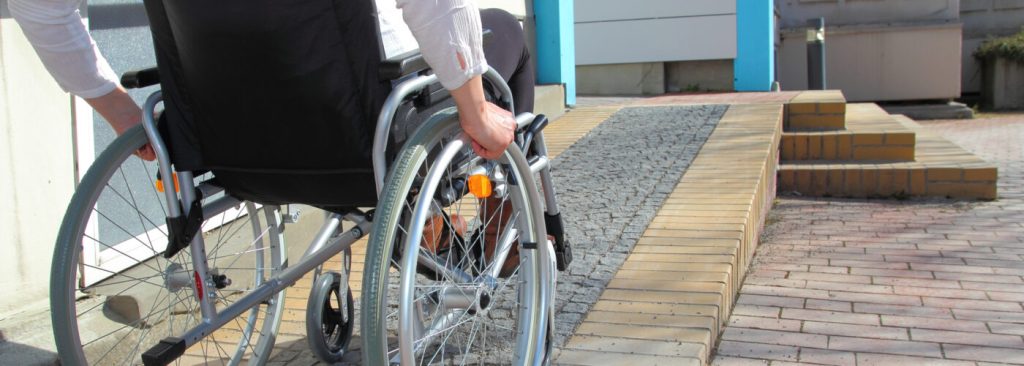

The Equality Act 2010 requires all buildings to have disabled access. There is a misconception that Listed Buildings are exempt from requiring wheelchair access, due to their historic nature of the building. That is incorrect.
Flat and Level Access.
By far the easiest way to achieve wheelchair access into every building is flat and level access i.e. no steps. This is the preferred option of Planners, Historic England and Historic Environment Scotland. So if your building can allow disabled access through the front door at a level surface, this is the ideal solution.
Temporary Ramp
The Equality Act 2010 requires ‘reasonable adjustment’ to buildings to enable disabled access. So if the building is perhaps a privately owned cafe in a Listed Building, then a temporary ramp would be suitable and would comply with the Equality Act 2010. This is a cost-effective solution. The temporary ramp must be safely stored and ready to use immediately as required. The temporary ramp must not exceed a gradient of 1 in 12.
Semi-Permanent Ramp
A semi-permanent ramp is a good solution for wheelchair access, assuming there is space. The rise must not be more than 1 in 12 gradients. So for each 100mm rise, the ramp must be 1.2m long. The ramp must not encroach on a public pavement without prior permission from the Council. The semi-permanent ramp must be inspected regularly to ensure its safety. The turning circle (if the ramp turns on itself) must comply with British Standards so wheelchairs and mobility scooters can turn easily on the ramp.

Comments